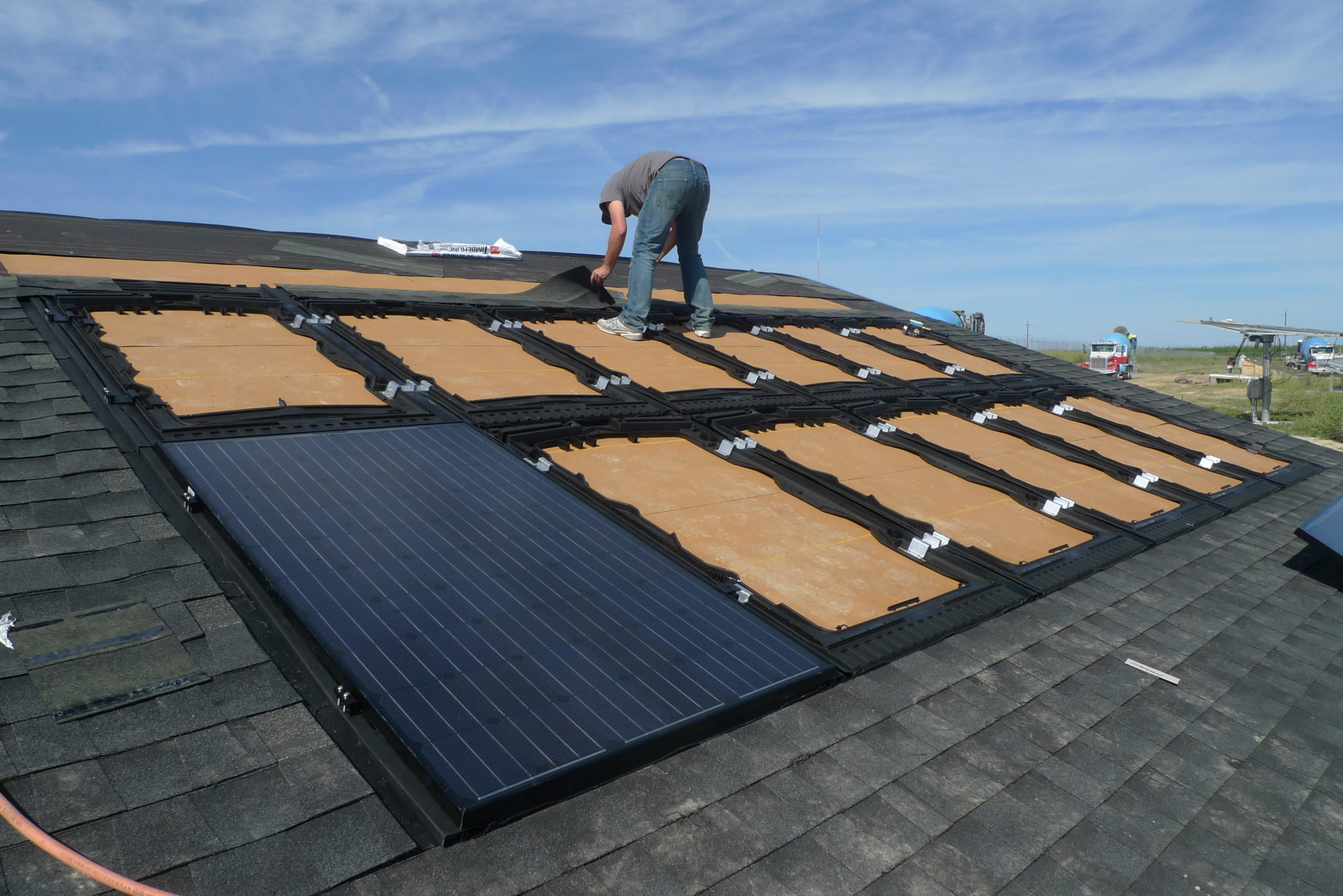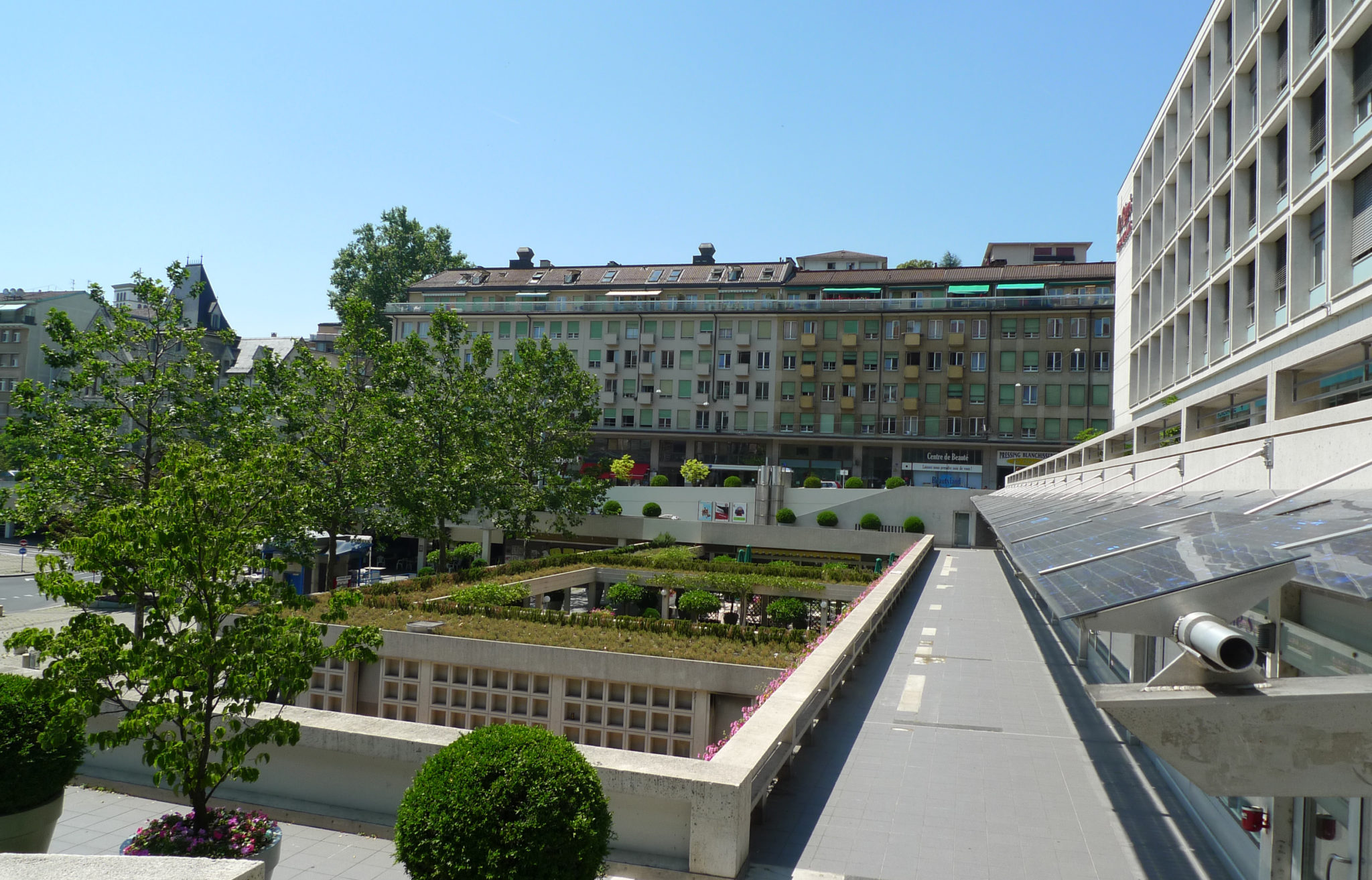Question 1: How can residential solar meet its potential in China?
Of the 54 GW of solar PV installed in China in 2017, a comparatively small amount was applied to the rooftops of private households. The commercial and industrial (C&I) space is purring nicely, and few in the industry need reminding of the staggering growth evident at large scale, but why are Chinese households seemingly averse to adding their own PV array? The answer to that question is not so simple…
Although there is no official data released for residential installation figures alone, there are a variety of calculations of the potential size of this market available. Trina Solar estimates the potential figure is around 40 to 50 million houses that are suitable for rooftop PV, and based on an average 5 kW array per house, the total potential market size is about 200 to 250 GW, with a value of more than 1 trillion RMB.
China’s residential rooftop market began growing in 2015 when about 30,000 array were installed. In 2016, a further 150,000 were added, growing to 250,000 in 2017. This year, several industry insiders estimate at least 400,000 residential PV systems will be installed. Chint Group, one of the key players in China’s household rooftop PV market, installed 30,000 systems in 2017 and for 2018 hope to grow that figure to 200,000 household installations. Large cell and module manufacturers such as JinkoSolar, GCL, Yingli Solar, Trina Solar and JA Solar all plan to commence direct sales into the residential market this year.
IHS Markit estimates that there will be about 400,000 residential arrays installed in China in 2018, reaching 2 GW of cumulative capacity. The analysts estimate that in 2018 China will become the second largest residential rooftop PV market and, by 2021, will surpass the U.S. to become the largest market globally.
Considering the continuous reduction of the FIT, household rooftop projects are becoming more profitable compared with utility PV. Further policy support from China’s central government will likely boost growth further.
There are three main business models in China for rooftop PV. The first one is the traditional distributor channel that accounts for around 50% of the total market. Distributors promote products including module, inverter, cables and installation, after-sales service and maintenance.. Many traditional cell and module manufacturers have also developed their own distribution channels. For example, JinkoSolar and Trina Solar both worked with 1,000 distributors by the end of 2017 and plan to expand by another 1,000 partners in 2018. Considering China’s vast rural territory, distributors can help to lower the cost of market penetration and help brands to occupy markets quickly.
The second model is rooftop leasing – an area where Chint is active. This model occupies around 30% of market share. The third model is direct sales, where system integrators identify opportunities to enter the market. They promote their own PV projects and outsource components from different suppliers. They are usually small but know the needs of the local customers.
The main obstacles holding back residential PV development are manifold. They include a limitation of transformer capacity whereby in remote villages the transformer capacity is not large enough for rooftop PV. This problem will be gradually solved by upgrading from national grid, but presently it is a problem.
The electricity price for the individual user in China is quite low, and thus public demand for PV is suppressed too. Furthermore, there is no official industrial standard for household PV, and this presents lots of potential problems. Quality concerns are common in project design, component selection, installation, maintenance and after-sales service. Many homeowners are drawn by low prices, which means low quality and makes projects risky. The government recently gathered a group including key players in this segment to generate a national industry standard, which is estimated to be finished in the first half of 2018. Under this industrial standard, which will be mandatory to all market players, quality issue will be gradually addressed.
Finally, because of the scattered nature of residential PV in China, there is a distinct lack of suitable financing instruments. This greatly limits the sector’s development. There are, however, stirrings in this space: JinkoSolar is working with the Industrial & Commercial Bank of China (ICBC) and China Construction Bank (CCB) to develop a bespoke financial service for residential PV via a credit card points system.

Question 2: Why is U.S. rooftop PV so expensive, and how can costs be brought down?
Former Sungevity CEO Andrew Birch shares his thoughts: “The single greatest factor holding back residential solar in the U.S. is red tape, which more than doubles the cost of solar to U.S. consumers relative to the rest of the world. All other opportunities for the sector pale into financial insignificance when compared to halving the cost of solar technology through simple policy changes already successfully implemented in all other markets globally.
The time has come to make it happen here – so how? Mathematically, 80% of the cost problem lies in just two policy areas, each with its solution proven overseas. The first issue is local permitting, which is currently a 3-6 month hell for U.S. installers and customers, but should only need a simple online application form, as proven overseas. The second is electrical code, which needs massively simplified to halve the installation time while maintaining safety and quality – again, as proven overseas. Those that disagree with these simplifications cite the relative superiority of American safety and quality standards. I only ask that those folk ask themselves how much of that belief comes from some form of national pride and how much from real data?
Neither solution needs federal policy changes – that’s the good news. The bad news is that there are literally tens of thousands of decision makers across the thousands of jurisdictions setting permitting requirements, and the hundreds of stakeholders creating electrical code. I believe that permitting and code can and must be solved by a coordinated, well-resourced and aggressively offensive strategy by the solar industry and supporting cast – targeting state governors. Offensive because we should be sick of playing defense in a world going solar. And state-focused because states stand to benefit the most, and are politically ready for this massive opportunity for leadership.
We need a single advocacy group to step up and lead. We need every solar installer in the U.S. to sign a petition stating the need to automate interconnection (sans permit) and scrap irrelevant code. Then we need to get hard at it to force the solution, scale the industry, create hundreds of thousands more solar jobs, lower U.S. energy costs and help save the planet. On behalf of our workers and customers, we cannot let U.S. residential solar continue to suffer two-times the cost burden of overseas markets any longer.”

Question 3: How can Europe’s governments show their support for rooftop PV?
Across Europe, rooftop PV installation rates have waxed and waned over recent years – invariably in response to the level of support offered by various European governments. From FITs to net metering and loans to tax breaks, government initiatives have proven valuable, but often unsustainable for rooftop solar. So how can this boom-bust cycle be broken?
James Watson, CEO of SolarPower Europe, had this to say: “Small solar installations on homes and buildings supported the majority of solar jobs created in Europe in 2017. Now is a crucial moment for government support for small installations, which are being threatened in the current Clean Energy negotiations.
Today, rooftop solar doesn’t necessarily need direct financial subsidies, but rather, the removal of the administrative and technical cost of market access. Governments can remove these hurdles and encourage the uptake of rooftop PV by ensuring fast and easy connection processes. Smaller producers simply don’t have the financial resources or capacities to compete with larger installations – imposing the same requirements on them would be crushing for small solar installations on the market. Rooftop solar should therefore be exempted from balancing responsibilities and benefit from priority dispatch in order to give them access to the market and ensure they have a fighting chance to succeed.
Governments can show their support for rooftop PV by supporting the removal of trade measures on solar panels. The trade duties are making solar much more expensive than necessary for European companies, consumers and the public purse. A recent report by the DG Justice & Consumers found that removing the trade measures would lead to a 20-30% increase in consumer uptake of solar in most EU countries due to a significant drop in price. Lifting the trade duties would have a hugely positive impact on rooftop PV, and make the consumer-focused clean energy transition a reality.”

Question 4: How can the UK maximize public support and goodwill for rooftop PV?
Everybody loves seeing solar panels adoring the rooftops of homes, business and factories, right? Well, not everybody, but most people certainly do. Distributed solar is by far the most popular form of electricity generation among the public in the U.K. – a nation hardly renowned for its sunny weather. So why is the British government not tapping into this, asks Leonie Greene, head of external affairs at the Solar Trade Association (STA).
“At a time when Westminster expresses such reverence for the ‘will of the people' it's strange this doesn't apply to energy and solar in particular, which consistently tops the British government’s Business, Energy and Industrial Strategy (BEIS) department’s own public opinion tracker.
It's a mistake to neglect solar, given the endless political wrangling in the U.K. over energy bills and energy supplier behavior. Rooftop solar and storage provide a long-term solution for stable energy bills that government should be promoting in the interests of sector diversity and competition.
Rooftop solar on offices, warehouses and industrial buildings is something pretty much everyone wants to see, including Conservative MPs. Yet the U.K. lags behind the rest of Europe on this crucial market. Unfortunately, the U.K. policy framework has consistently neglected supporting larger rooftops, despite the 2014 DECC Solar Energy Strategy, which rightly put it as a focus. The restructured FIT, which went live in 2016, failed to make meaningful accommodation for industrial and commercial rooftops from the outset, so this makes the broader tax and regulation framework vital to get right today.
In terms of a level playing field, we want to see rooftop solar used for self-consumption given the same business rate exceptions as onsite gas CHP. These are effectively the only two widely available options for companies seeking to generate power onsite, and it is perverse that the carbon-free option is taxed far more heavily. ‘Business rates' will be an anathema to many international readers since the U.K. is pretty unusual in levying taxes on investments in plant and machinery, and that includes solar power. That obviously creates an unlevel playing field internationally too. That and the need for productivity investment is why scrapping business rates on plant and machinery is a key ask of all the main business lobbies in the U.K.
We would also like to see solar and storage given Enhanced Capital Allowances. Fossil fuel investments like shale gas platforms are eligible for 100% first year capital allowance write downs – it is quite wrong that fossil fuels are getting tax benefits that are not available to renewables. Nobody should still be having to make these arguments today.
We also want to see a level playing field for large scale solar – simply the ability to compete in auctions for Contracts for Difference (CfD). It isn't in the interests of consumers to hinder competition between technologies, and this does not seem to be in the spirit of State Aid Rules.
We need to get the message out that solar remains a good investment for domestic homes, and storage is increasingly shifting the economics in our favor. In this regard, some of the consumer data available isn't accurate, and this is something we are working to address.
What we are seeing, however, is good leadership by local councils and regional government. Many have planning policies on new builds that are helpful for sustaining the sector. We also know that many corporates are strongly committed to the climate agenda and their interest in solar remains strong. But it is frustrating that national government policy does not recognize and reward those companies that are doing the right thing. Indeed, leading investors in solar like Sainsbury's have instead been stung by steep business rate rises. That cannot be right.”

Question 5: How important are aesthetics in the residential sector?
A tableau of sleek and symmetrical solar panels, glistening a deep dark blue or black underneath a cloudless azure sky may get the juices flowing for many, but there remains a sizeable and stubborn minority that think the typical solar panel is rather ugly. Such attitudes have softened as solar has become more widely deployed, but they do remain – so are companies doing enough to allay such aesthetic fears? Austria’s Kioto Solar has actively sought to address this with its striking Mein Kraftwerk module, which looks unlike any other module on the market.
“We had a product in our minds that can be used by everyone,” Kioto Solar head of product management Frank Rudolf told pv magazine. “Even for customers who do not want to invest in a bigger PV array or simply do not have the space for it. The basic idea was to create a module that you simply can plug into a socket and produce your own energy. Because this usability also meant the possibility of opening up new sales channels, we decided to make the design more eye-catching.
“On the standard market every module looks pretty much identical. Therefore, Kioto Solar was also the first manufacturer to use glass–fiber reinforced plastic edge connectors to optimize the design and ensure no sharp edges.
“We also wanted to bring a module to the market taht stands out from the crowd with its unique print and rounded corners. And if a homeowner wants to use the Mein Kraftwerk module on a simple roof installation, then that is also possible due to the frame construction.
pv magazine asked: do the types of consumers that demand good-looking modules also expect to pay more for higher power output?
“Yes, our focus on the whole product portfolio is high power to optimize the used area and deliver a USP for our customers. Customers also have the chance to go for a black version of every module that we produce, and pay a premium for that.
For the Mein Kraftwerk module we have used a special technology developed by Kioto Solar. This is our so-called Triple Black – this means that the ribbon pattern (the only area of the module that reflects sunlight) can also be colored black. This effect delivers a high performance module with an absolute homogeneous optic.”
This content is protected by copyright and may not be reused. If you want to cooperate with us and would like to reuse some of our content, please contact: editors@pv-magazine.com.



1 comment
By submitting this form you agree to pv magazine using your data for the purposes of publishing your comment.
Your personal data will only be disclosed or otherwise transmitted to third parties for the purposes of spam filtering or if this is necessary for technical maintenance of the website. Any other transfer to third parties will not take place unless this is justified on the basis of applicable data protection regulations or if pv magazine is legally obliged to do so.
You may revoke this consent at any time with effect for the future, in which case your personal data will be deleted immediately. Otherwise, your data will be deleted if pv magazine has processed your request or the purpose of data storage is fulfilled.
Further information on data privacy can be found in our Data Protection Policy.